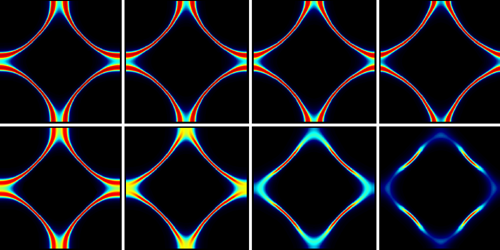Palladium Oxides Might Be Superb Superconductors
Copper-based (cuprate) superconductors have long held the record for the highest superconducting critical temperature (Tc) at ambient pressure. In 2019, after decades of theoretical and experimental effort, researchers reported a nickel-based (nickelate) analog to cuprate superconductors (see Trend: Entering the Nickel Age of Superconductivity). Since then, others have sought to pinpoint the factors that control superconductivity in such single-orbital-dominated systems. Motoharu Kitatani of the University of Hyogo in Japan and his colleagues now identify some of these factors and suggest that swapping out nickel for palladium could deliver a material that superconducts at even higher temperatures than cuprate superconductors [1]. The study could help guide the ongoing search for novel superconducting materials and establish “palladates” as the new kid on the block.
Kitatani and his colleagues previously had used a standard condensed-matter-physics model, called the single-band Hubbard model, to predict Tc for nickelates and had validated their predictions using measurements in defect-free nickelate films. Now, by simulating this system while varying the electrons’ interaction strength, filling factor, and energy-momentum dispersion, the researchers have tracked the strength of electron–electron pairing that leads to the emergence of superconductivity. This allows them to determine the electronic configuration that optimizes Tc. However, according to their results, neither nickelates nor cuprates come close to these optimized conditions. Instead, the researchers have found that palladates, thanks to somewhat weaker interactions and thus weaker correlations, could more closely approach the optimal “Goldilocks” conditions that maximize Tc. The researchers hope their theoretical results will encourage experimentalists to grow and examine palladates as new candidates for higher-Tc options.
Correction (21 April 2023): The teaser was updated for clarity.
–Rachel Berkowitz
Rachel Berkowitz is a Corresponding Editor for Physics Magazine based in Vancouver, Canada.
References
- M. Kitatani et al., “Optimizing superconductivity: From cuprates via nickelates to palladates,” Phys. Rev. Lett. 130, 166002 (2023).




